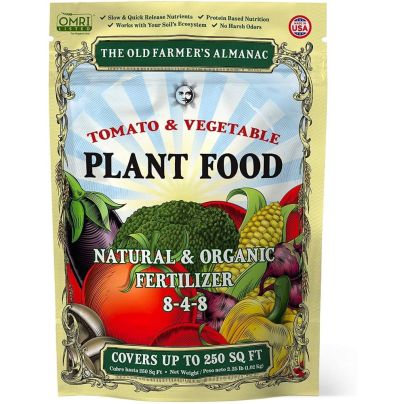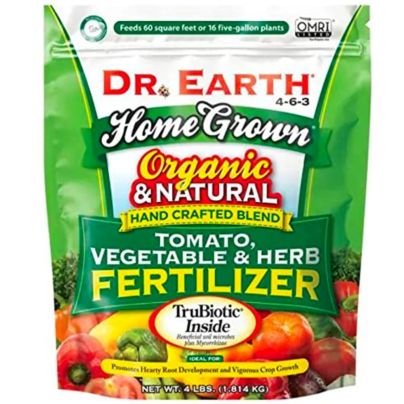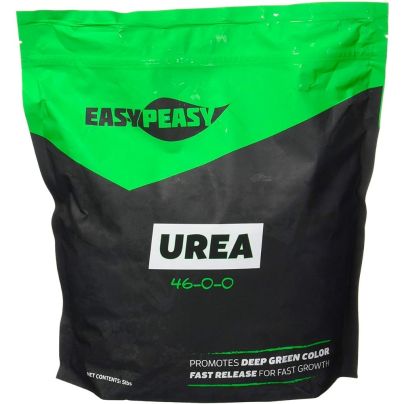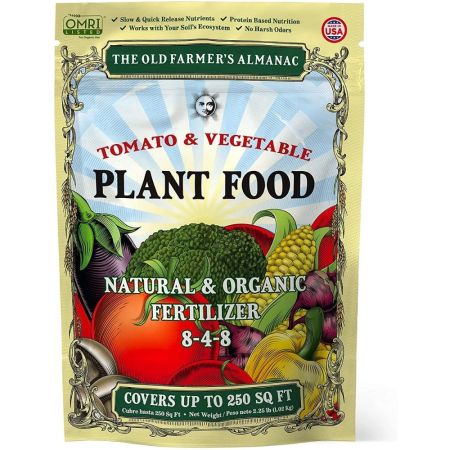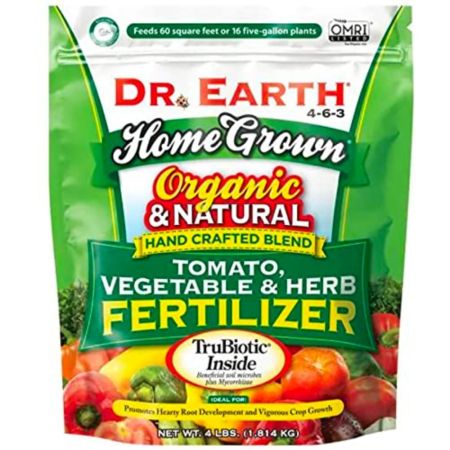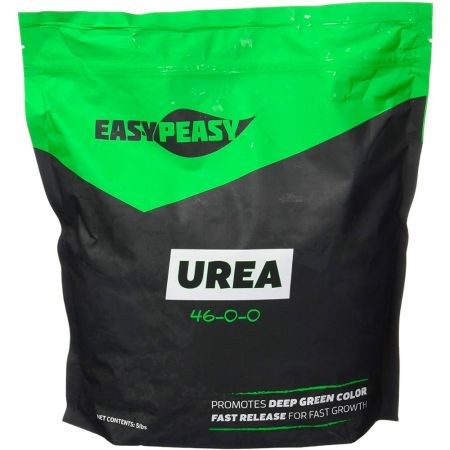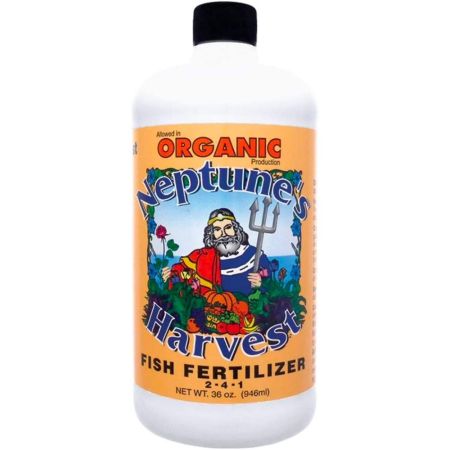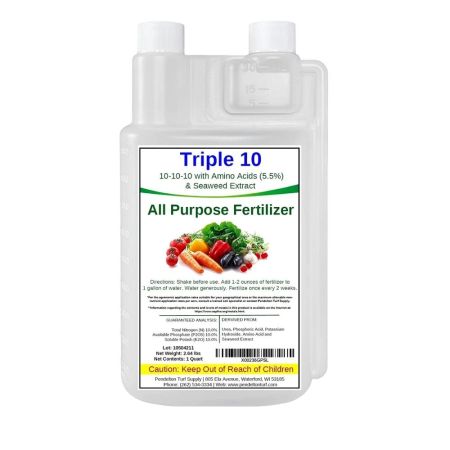We may earn revenue from the products available on this page and participate in affiliate programs. Learn More ›
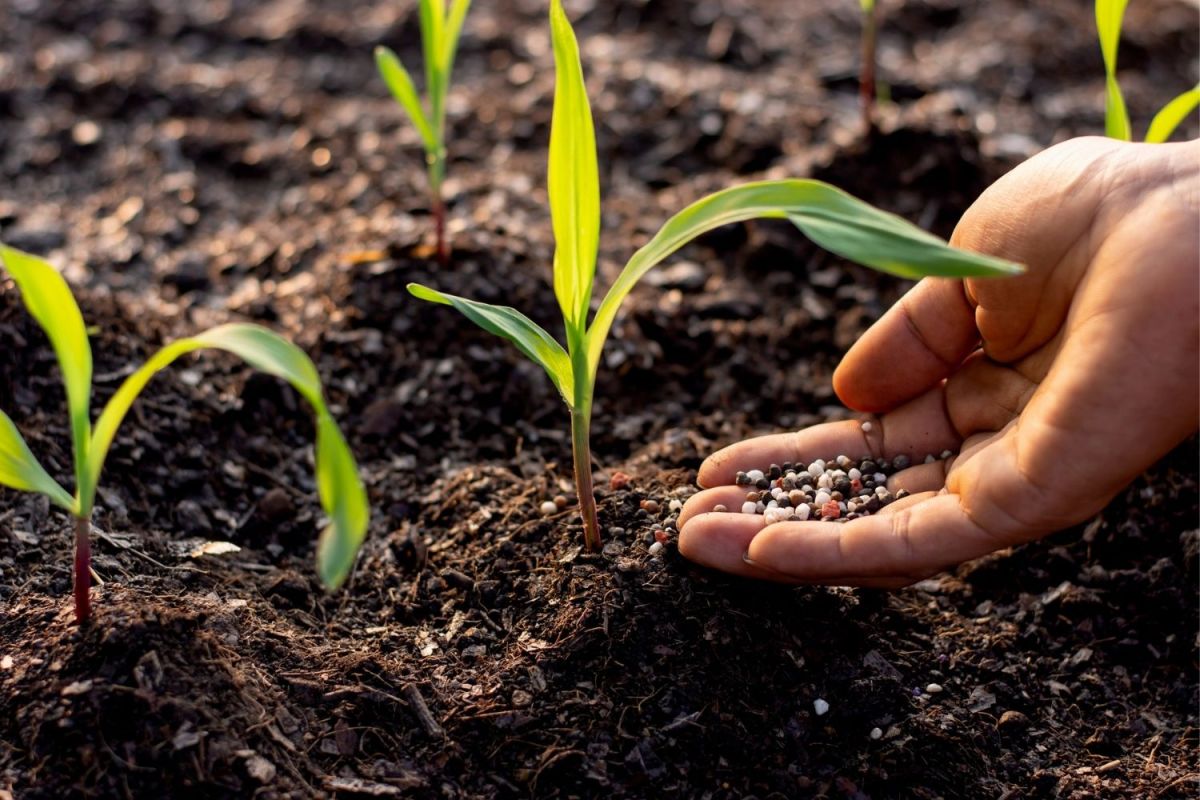
Also known as maize, mielie, or sweet corn, corn (Zea mays subsp) has been domesticated for 10,000 years, and today it’s a staple crop around the world. In fact, it’s the most widely grown crop in the Americas. However, choosing the correct fertilizer for corn plants is essential to the plant’s ability to thrive.
With so many types of plant fertilizers available, it can be difficult for shoppers to narrow down the options. To help make the search easier, the following recommendations were selected for their quality formulas, versatility, and value. Keep reading to learn about some of the key features to consider when shopping for the best corn fertilizer, and then explore some of the top picks organized by each product’s winning features.
- BEST OVERALL: The Old Farmer’s Almanac Organic Vegetable Fertilizer
- BEST BANG FOR THE BUCK: Dr. Earth Organic Vegetable Fertilizer
- BEST NITROGEN: Easy Peasy Urea Fertilizer- 46-0-0
- BEST LIQUID: Neptune’s Harvest Fish Fertilizer 2-4-1
- BEST ALL-PURPOSE: Pendleton Turf Supply Triple 10 Liquid Fertilizer
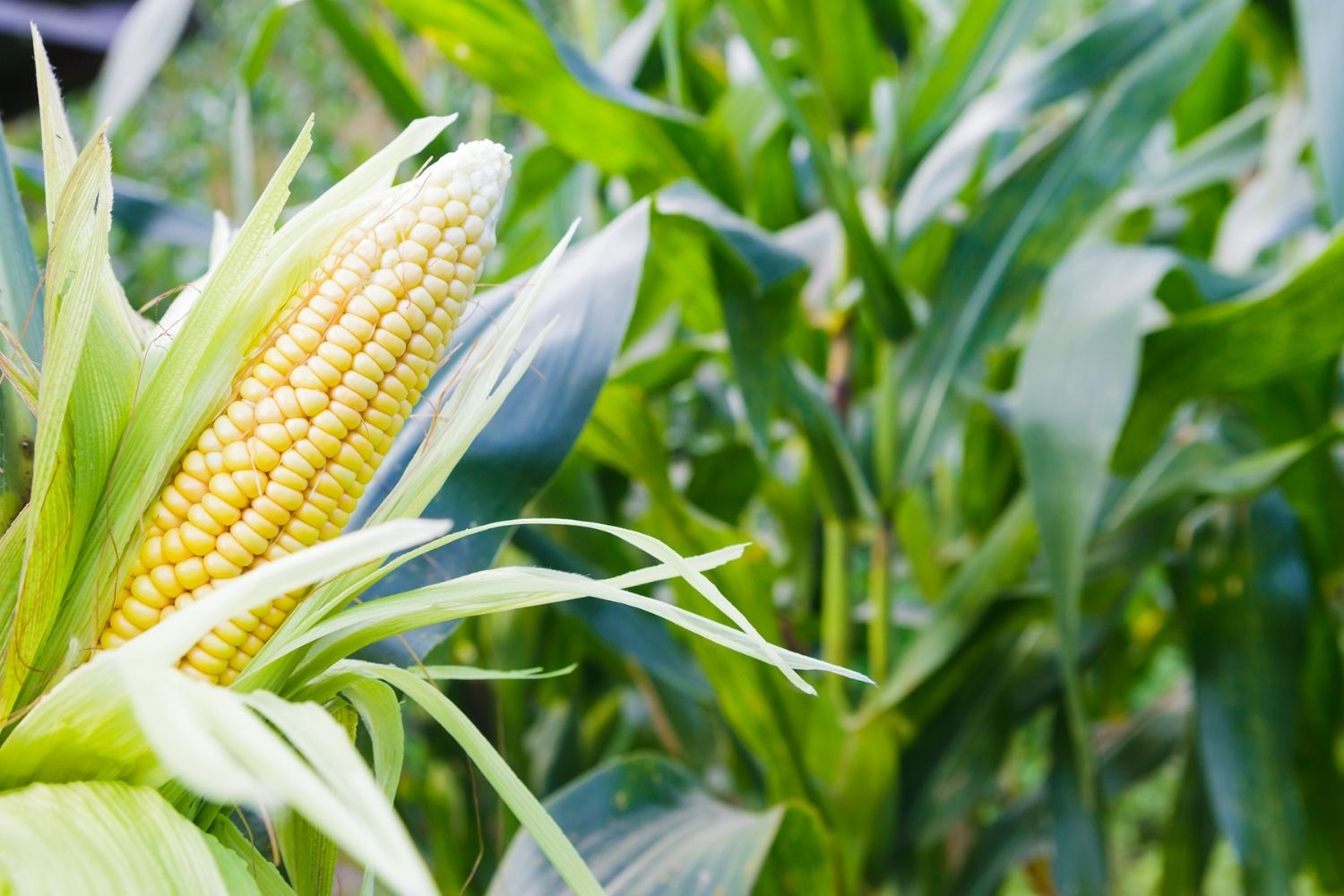
Before You Buy the Best Fertilizer for Corn
Before choosing a corn fertilizer, it’s important to assess the planting area. Choose a location that receives full sun with loamy, well-drained soil for the best results. Measure the square footage of the plot to establish the quantity of fertilizer needed. The soil’s pH level must be tested to understand its acidity level, which will help determine the best fertilizer for sweet corn for your specific needs.
As with many other crops, the soil should first be fertilized before seeding. Add a top layer of compost to the soil, and mix the chosen fertilizer into the compost before planting.
What to Consider When Choosing the Best Fertilizer for Corn
While it’s easy to assume that all plant fertilizers offer similar performance, a number of factors affect their functionality. Keep reading to learn about several of the most important features to consider when choosing the best fertilizer for sweet corn crops.
Types of Fertilizer for Corn
Fertilizers typically come in one of two formulations: granular or liquid. Each type is best suited to different applications.
- Liquid fertilizers are typically designed to be diluted with water and sprayed onto plants or soil. They deliver immediate results, but the primary downside of liquid fertilizers is that they need to be applied frequently at 1- to 2-week intervals. Since liquid fertilizers can easily be diluted, however, it’s easy to avoid overfertilizing when using them.
- Granular fertilizers are a great choice for fertilizing after seeding—otherwise known as side-dressing—because they can be applied to the soil without accidentally being applied to the plants themselves. Granular fertilizers slowly release nutrients over time, only requiring application every 4 to 6 weeks.
Soil and pH Level
It’s essential to test the soil’s pH level before planting by using a home pH test kit or having it professionally evaluated. The best soil for corn is slightly acidic at 6.0 and neutral at 7.0. Soils that are too acidic should be treated with lime in the fall before planting to ensure the best results. In many parts of the country, no pH amendments will be needed to successfully grow corn. Many fertilizers, however, contain ingredients meant to boost acidity for acid-loving crops, and unless your soil is extremely alkaline, you should avoid fertilizers that contain ingredients like manganese, ammonium sulfate or sulfur-coated urea, which increase acidity.
Nutrients and NPK Ratio
Plant fertilizers are typically rated with an NPK ratio which lists the balance of macronutrients found in the formula. These three macronutrients—nitrogen (N), phosphorus (P), and potassium (K)—are needed in varying quantities depending on the period of the corn plant’s life cycle.
Pre-planting fertilizers for corn should have NPK ratios of 1-4-0, 1-3-1, 1-3-3, or 1-1-1 to ensure they don’t contain too much nitrogen. This will ensure they develop a healthy root system and have strong stems and foliage. Corn is a heavy feeder and needs a high quantity of nitrogen to thrive once it is established. Be sure to choose a fertilizer that’s high in nitrogen for subsequent side-dressing.
Organic vs. Inorganic
Plant fertilizers are made with either organic or inorganic ingredients. Both types of formula have advantages and disadvantages.
- Organic fertilizers only contain natural ingredients. They are sold commercially but can also be formulated with household scraps and ingredients like coffee grounds. One major advantage of organic fertilizers is that they continue to work as the growing season progresses. If choosing an organic formula is important to you, be sure to pick a brand that’s certified by a board like the Organic Materials Review Institute (OMRI).
- Inorganic fertilizers contain synthetic ingredients and work quickly to provide results. Synthetic fertilizers typically contain higher quantities of each macronutrient than organic fertilizers. Inorganic fertilizers tend to be odorless, while organic formulas may have an unpleasant smell.
Our Top Picks
Knowing more about corn plant care and corn fertilization requirements can help narrow the numerous choices available. To make the search even easier, consider the following selections, which are some of the best corn fertilizer options for a garden.
Best Overall
The Old Farmer's Almanac Organic Vegetable Fertilizer
See ItThis OMRI-listed fertilizer from The Old Farmer’s Almanac is an excellent overall pick that can be used to provide nutrients to corn as well as other vegetable crops. Despite the fact that it’s made from organic ingredients, it doesn’t have as strong a smell as many other natural formulas.
With an NPK ratio of 8-4-8, the formula is high in both nitrogen and potassium, so it’s better suited for use once seedlings are established. This fertilizer contains both fast- and slow-release nutrients, allowing for it to be applied infrequently. The quantity provided should fertilize up to 250 square feet of soil and must be reapplied every 4 to 6 weeks for the best results. It comes in a resealable bag, ensuring freshness and making for tidy storage.
Product Specs
- Type: Granular
- Quantity: 2.25 pounds
- NPK ratio: 8-4-8
Pros
- Resealable bag
- Easy application
- OMRI listed
- Versatile formula
Cons
- Not suitable for pre-planting fertilization
Get The Old Farmer’s Almanac Organic Tomato & Vegetable Fertilizer on Amazon, at The Home Depot, or at Walmart.
Best Bang for the Buck
Dr. Earth Organic Vegetable Fertilizer
See ItOrganic formulas tend to have higher price tags, but this organic option from Dr. Earth is made with natural feed-grade ingredients and is available at an affordable price. It’s OMRI certified as well as being organic and GMO-free.
With a relatively balanced formula containing a slightly higher ratio of phosphorus, it’s a great choice for pre-planting fertilization of corn crops and other vegetables. Along with essential macronutrients, it also contains probiotics, seven strains of soil microbes, and beneficial fungi like ecto and endo mycorrhizae, all of which contribute to creating a more nutrient-rich soil. Since it doesn’t contain a high percentage of nitrogen, it’s not the ideal pick for fertilizing growing corn plants.
Product Specs
- Type: Granular
- Quantity: 4 pounds
- NPK ratio: 4-6-3
Pros
- Made with natural, feed-grade ingredients
- OMRI certified
- Free of GMOs and chicken manure
Cons
- Not suitable for side-dressing corn once established.
Get Dr. Earth Organic Vegetable Fertilizer on Amazon, at Dr. Earth, or at The Home Depot.
Best Nitrogen
Easy Peasy Urea Fertilizer- 46-0-0
See ItOnce corn plants are established, they benefit from a heavy dose of nitrogen to help them produce a high yield. This fertilizer from Easy Peasy has an NPK ratio of 46-0-0, meaning it contains only nitrogen without any phosphorus or potassium. The synthetic formula is fast-acting, delivering quick results.
Just 2.5 cups of fertilizer should feed 100 square feet of soil. To use, employ a side-dressing technique by mixing the fertilizer into the soil three inches from each plant’s stem. Be careful to avoid getting the granules on the plant’s leaves when applying to prevent burns.
Product Specs
- Type: Granular
- Quantity: 5 pounds
- NPK ratio: 46-0-0
Pros
- Resealable bag
- High nitrogen content
- Versatile formula
Cons
- Not suitable for pre-planting fertilization
Get the Easy Peasy Urea Fertilizer on Amazon or at Easy Peasy.
Best Liquid
Neptune's Harvest Fish Fertilizer 2-4-1
See ItThis organic fertilizer from Neptune’s Harvest is formulated with a combination of seaweed, hydrolyzed fish, yucca extract, molasses, and humate. It’s certified by the OMRI, ensuring that it’s made exclusively with natural and organic ingredients. Since its macronutrient content is relatively low, the risk of overfertilizing is minimal.
While this bottle contains 36 ounces of product, the fertilizer is also available in quantities as large as 1 gallon, which is better suited to commercial applications. It’s important to note that once this fertilizer has been diluted in water, it cannot be stored for any period of time. Apply the fertilizer every 1 to 2 weeks for the best results.
Product Specs
- Type: Liquid
- Quantity: 36 ounces
- NPK ratio: 2-4-1
Pros
- OMRI listed
- Includes valuable micronutrients
- Suitable for both indoor and outdoor plants
Cons
- Needs to be applied more frequently than granular fertilizers
- May have an unpleasant odor
Get the Neptune’s Harvest Fish Fertilizer 2-4-1 on Amazon, at Neptune’s Harvest, or at Walmart.
Best All-Purpose
Pendleton Turf Supply Triple 10 Liquid Fertilizer
See ItWith an NPK ratio of 10-10-10, this liquid fertilizer contains an equal amount of nitrogen, phosphorus, and potassium, providing a well-balanced formula that’s suitable to almost any type of plant. For corn, this product is perfect for pre-planting fertilization. Though it doesn’t contain a high percentage of nitrogen, it can also be used for fertilizing growing plants without any adverse effect.
It’s an ultra-concentrated formula, so while the bottle is relatively small at 32 ounces, only 1 ounce of fertilizer is needed per gallon of water. The liquid formulation also allows users to further dilute the product to prevent overfertilization.
Product Specs
- Type: Liquid
- Quantity: 32 ounces
- NPK ratio: 10-10-10
Pros
- Versatile formula
- Highly concentrated
- Simple application method
Cons
- Needs to be applied more frequently than granular fertilizers
Get the Pendleton Turf Supply Triple 10 All Purpose Liquid Fertilizer on Amazon.
Our Verdict
After reviewing this guide, you now know more about shopping for fertilizer for your corn plants. We recommend The Old Farmer’s Almanac Organic Vegetable Fertilizer for its versatility, organic formulation, and relatively affordable price. Those on a budget may appreciate the Dr. Earth Organic Vegetable Fertilizer, which offers similar performance at a lower price point.
How We Chose the Best Fertilizer for Corn
Years of experience covering home and garden products as well as extensive product research went into creating this guide. We explored more than 20 fertilizer options and weighed a number of practical considerations before making our recommendations.
- Organic vs. inorganic: Since there are advantages to both organic and inorganic fertilizers, we included both types in this guide.
- NPK ratio: Since corn has unique needs in terms of macronutrients, we include both formulas for pre-planting fertilization and side-dressing.
- Value: Plant fertilizers vary widely in type and quantity. We ensured that each recommended product offered excellent value, regardless of the format.
Tips on How to Fertilize Corn
While you may have now chosen the best corn fertilizer for your crop, there are still some important tips when it comes to how to use it. The following pointers should ensure that your corn plants are properly fertilized and that they produce a bountiful harvest.
- Each fertilizer has specific application instructions; be sure to follow the directions on the label.
- Avoid spraying fertilizer on the corn’s leaves, especially if it contains a high percentage of nitrogen.
- After planting, fertilize corn using a side-dressing technique.
- When using granular fertilizers, ensure they’re thoroughly mixed into the soil.
- Always water the plants when applying fertilizer.
- Stop fertilizing corn when the ears begin to show silk.
FAQs
While you now know more about choosing the best corn fertilizer, you might still be looking for more information about how to use it. Here are answers to some of the most frequently asked questions about fertilizing corn.
Q. How often should you fertilize corn?
Corn should ideally be fertilized three times during its growth cycle: once before planting, once when the plants are 4 weeks old, and a final time when they are 8 to 10 weeks old.
Q. Can you put too much nitrogen on corn?
As with most plants, overfertilization is a potential risk. Excessive nitrogen at planting can stunt plant growth or even kill the seedlings.
Q. Should you water corn every day?
Due to its deep roots, corn must be watered thoroughly; this means that gardeners can water it less frequently. Watering deeply once a week is recommended in most growing conditions.
Q. When should nitrogen be applied to corn?
Fertilizers containing a high quantity of nitrogen should only be applied once the plants are at least 4 weeks old.
Q. What is the best way to add nitrogen to soil?
Add a nitrogen-based fertilizer by using a sidedressing technique. Apply the fertilizer 3 inches from the stalk on both sides.
Q. How do you organically fertilize corn?
To fertilize corn organically, purchase a commercial fertilizer that’s made from certified organic ingredients or create a DIY fertilizer using compost.
